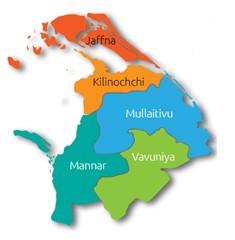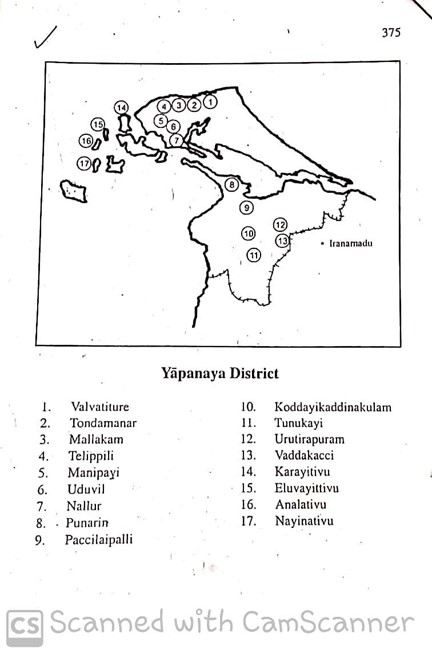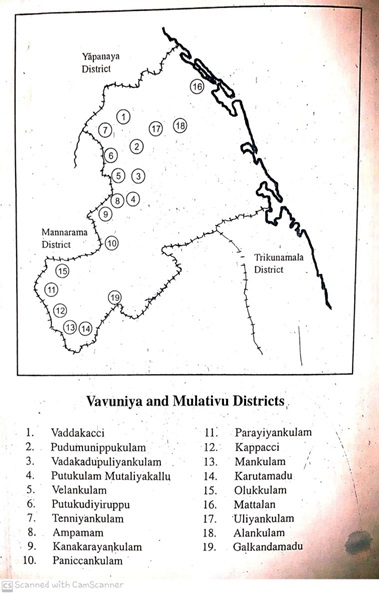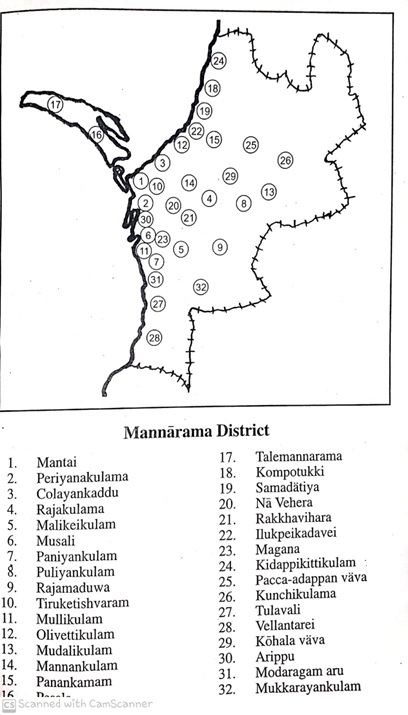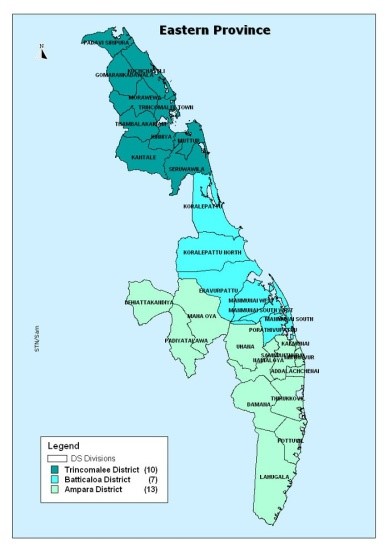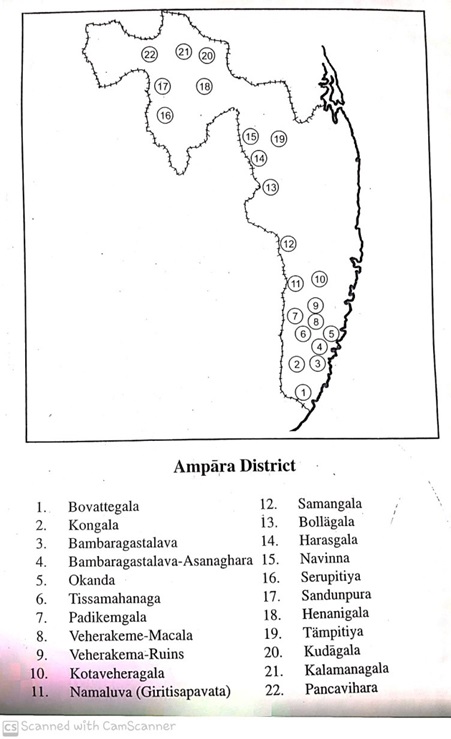KAMALIKA PIERIS
According to the Mahavamsa, the Buddha visited Sri Lanka thrice. His second visit was to Nagadipa to settle a quarrel between Chulodara and Mahodara over the possession of a gem-studded throne. .Nagadipa is therefore one of the solosmastana, the 16 places of worship to which Buddhists go on pilgrimage.
Mahavamsa records many Buddhist shrines at Nagadipa. Devanampiyatissa had built several viharas at Jambukola. Mallaka naga had founded Sali pabbata vihara and Aggabodhi I built the relic house, Rajayatana. Mahavamsa also records that Mangala vihara was restored by Dhatusena, Vijayabahu I repaired Jambukola vihara and Voharaka tissa built walls around the vihara named Tissa. Kanitta tissa had repaired a temple at Nagadipa.
Paul. E. Pieris (1874-1955) researched into the location of ‘Nagadipa’. He found that the main embarkation point to north India in ancient times was ‘Jambukola’ in ‘Nagadipa’. From Jambukola it took seven days to get to Tamralipti, a port at the mouth of the Ganges. Jambukola therefore had to be in the Jaffna peninsula.
Pieris stated in a paper read before the Royal Asiatic Society, Ceylon Branch, that ‘Nagadipa’ was the name given to the Jaffna peninsula and its islands. He pointed ouit that Ptolemy had called the Jaffna peninsula ‘Nagadiboy’. His paper was published as ‘Nagadipa and Buddhist remains in Jaffna’ in the Journal of the Royal Asiatic Society, Ceylon Branch, 1917.
The Vallipuram gold plate, of king Vasabha (67-111) settled the matter. It confirmed that ‘Nakadiva’ was the ancient name for Jaffna. The Vallipuram gold plate was found in 1936, under the foundation of a building next to the Vishnu temple at Vallipuram..
The sheet was brought to Paranavitana in 1937, by Ven. Walpola. Rahula who had got it from S. Thangarajah, who had got it from his cousin Rajah of Puloli, the finder of the sheet. After taking the necessary estampages and photographs, the sheet was returned .
In the 1950s or so, the National Museum wanted to buy the item.The finder was prepared to sell the sheet for 500 rupees,but suddenly the sheet vanished it remained out of public view, conveniently forgotten, for years.
Then when the Eelam cry started, the Vallipuram gold plate suddenly emerged. it was handed over by an unnamed Tamil person, to a leading bhikkhu who made it public. I recall listening to the announcement, but cannot remember the date, the year or name of bhikkhu. The media carried it. The information should be available.
Paul. E. Pieris also greatly helped to establish that ancient Jaffna was Buddhist . Pieris was traveling by train to Jaffna in 1913 when he spotted an interesting mound at Chunnakam. He investigated it and found it to be a dagoba. It was the first dagoba to be found in Jaffna. Then he excavated at Kantarodai (Kadurugoda), six miles southwest of Kankesanturai, adjoining Uduvil.
At Kantarodai, he found a vast area containing mounds of dagobas and several badly destroyed Buddha images. A Buddha image of ‘heroic size’ was found abandoned, in sections, in a field. Another large Buddha statue measured nearly five and a half feet across the shoulders and weighed nearly three quarters of a ton. The size indicated ‘the high degree of sanctity once attached to this place’.
There was evidence of a huge building complex at Kantarodai. One building had a floor area of fifty six feet by thirty six. A religious establishment of great importance had been established here, said Pieris. It had extended on to the adjoining lands as well. The complex was within a shout’s distance of Uduppili tank.
Kantarodai appeared to be a miniature Anuradhapura buried in Tamil country”, said Pieris. No attention had been paid to this complex and instead it was getting systematically erased. The villagers were regularly removing stones from the site to use for other purposes. The materials and images were used as doorsteps, stepping stones, aids for washing at wells and for Hindu worship. Pieris found a large fragment of the torso of what must have been at one time a gigantic stone statue, being used at a well for washing clothes. Pieris renovated some of the dagobas . Total cost was Rs 100.
Pieris noted that Kantarodai, Uduvil and Chunnakam were in the centre of an extensive Buddhist ‘chunk’ located in the Valikamam division of the Jaffna peninsula. Valikamam is ‘Weligama”. A chain of other Sinhala place names, converted to Tellipalam, Vimankam, Chunnakam and Kokuvil can be seen in this Division, going up to Kankesanturai, said Pieris .
Pieris communicated these findings at the RAS talk mentioned earlier, ‘Nagadipa and Buddhist remains in Jaffna’ . John M Senaveratne who was present at the talk said that Pieris has ‘confirmed for us what was for long suspected and indicated’ by B. Horsburgh and J.P.Lewis, that Jaffna was a part of the ancient Sinhala Buddhist civilization.
Senaveratne said that Vallipuram should also be investigated. There seems to be another centre of Buddhism there. Vallipuram had sand heaps with masses of broken blocks extending 3 miles in length.
Evidence of this Buddhist civilization had emerged earlier. A stone image of the Buddha about 8 feet in height was unearthed near Vishnu temple in Vallipuram, in 1903, together with ruins of buildings, pottery and coins. The statue was kept in the lumber room of the temple. J.P.Lewis, then Government Agent, Jaffna, placed it in the Old Park at Jaffna.
Another image of the Buddha found at Chunnakam was also placed there. In 1906, the Vallipuram Buddha was presented by Governor, Sir Henry Blake, to the King of Siam who was particularly anxious to have it, owing to its antiquity. It is now in Bangkok.
Ceylon Observer (14.October 1949) noted that Buddhist remains were found at Delft and that Pieris had discovered a remarkably fine image of the Buddha at Makayappiddi, in the courtyard of the Meenachchi Amman Temple.
E.T. Kannangara in his book Jaffna and the Sinhala heritage (1984) has provided a list of the places in the Jaffna peninsula where Buddhist remains have been found in modern times. Several Buddha images were found at Puttur. Some were in Dhiyana mudra, one was 8 ft tall. Remains of a dagoba and Buddha statue were found at Mahiyapiti. Buddha images, shrine and yantra gala were found at Mallakam. Buddha image, moonstone, door frame, pillars and three mounds of earth were found at Vavunikulam.
A Buddha image and dagoba was found at Koddiyawattai, a hamlet in Chunnakam, continued Kannangara. Buddha image was found in the village of Navakiri at Nilavarai. A Buddha footprint was found at Puloli, two miles from Point Pedro. Remains of dagobas have been found at Nilavari, Tellipali Uduvil and Uruthirupuram. There is evidence of a Buddhist vihara in Keerimalai. Buddhist ruins were also found at Anakottai, Chulipuram and Uruthirupuram. Vallipuram contained old bricks, foundations of buildings, damaged Buddha images, ruins of a Buddhist vihara and a place named ‘sakkawattai’, said Kannangara.
Kannangara said that there were Buddhist temples on the sites of some present day kovils. Kandasamy kovil at Nallur was earlier a Buddhist shrine with an altar for Skanda. Buddha images were found quarter mile from this kovil. The Hindu kovil at Mawatupuram, a village near Kankesanturai, was earlier Mawatupura vihara. An ancient Buddhist vihara near the 9th mile post along Jaffna-Karaingar road across Manipay is now a Hindu kovil.
Kannangara stated that place names also showed that Jaffna had been Buddhist. Places named Sakkavattai (sangha watta) are found at Kankesanturai, Mawatapuram and the adjacent villages. Until the 1980s a hamlet close to Tellippalai was known as ‘Buddha Walauwwa’. Puttur is ‘Budugama’. ‘Ur’ means village in Tamil . .There is ‘Gothamaluwawatta’ about a quarter mile from Ponnalai. There is ‘Pinwatte’ and also ‘Buddhawattai’ close to Kantarodai.
In 1982 M. H. Sirisoma, Asst. Commissioner of Archaeology, compiled a map of the Buddhist ruins in the north and east. The following places in the Jaffna peninsula were listed Allaipitti, Chummakam, Delft, Gotamaluwawatta ( Kattupulam) Kadurugoda, Kilinochchi. Oddiyawattai, Mahaiyapitti, Mallakam, Nagadeepaya, Nagaviharaya, Nilavarai, Puloli, Puttur , Sambiliturai ( Jambukolapatuna) Uduvil, Urutiruputam, Vallipuram, Vavunikulam, Viralai, and Waddumakaddu,
Ven. Ellawela Medhananda explored the Buddhist monuments of Jaffna Peninsula, starting in 1978. He found that the following places contained Buddhist ruins: Accuveli, Analutivu, Anei kottai,Ariyalei, Buddha valavva, Buddhatotttm, Culipuram, Cunnakam, Delft, Elvativu, Gotamaluva watta, Araitivu, Kodiyavatta, Mahiyapiddi, Mallakam ,Manipai, Aratamadam ,Mavaddiputam, Nagacca kovil area, Nagarkovil, Nainativu, Nallur , Nilavarai, Pinvatta, Ponnalai, Puloli, Punarin, Punkudutivu, Puttur, Sambiliturai, Telippali, Tenavali, Tiruadiniilei, Tisamalei, Tondamannar, Tunukai, Uduppidi, Uduvil, Uratota, Vadukkode, Vakaveli, Valikanam, Valvetiturai and Vangane.
Medhananda said that Vallipuram, known earlier as Valipura, had been a flourishing town. The evidence is in the massive wall encircling the whole area of the ruins, running more than a mile towards the North east. Most of the Buddhist ruins are now buried under the Vishnu kovil that has been built on top of these Buddhist ruins.
Ven. Medhananda had visited Kadurugoda . The site was bisected, he said. The Uduvil Kantarodai main road runs in between. There are more ruins outside these boundaries too, in coconut and talipot palm groves. An area of about 50 acres can be said to contain ancient Buddhist ruins, he said.
Ven. Medhananda looked at the literary evidence and decided that Kadurugoda was a part of a religious complex known as Nagavehera. He thinks that all these stupas were around one important central monument. He was told by his informant that this site had earlier been known as ‘Rajayatana cetiya’ Ven. Medhananda re-visited Kandarodai again in 2001. It was much changed, he said, the site had been encroached on all sides, new houses had been built.
Ven. S. Dhammika (2007) observed that the pinnacles found at Kantarodai indicate that there would have been many more stupas than the ones seen today. Today, there are only 20 complete stupas.
The largest stupa is about 23 feet in diameter and the smallest about 6 feet. The base of each stupa is made of coral stone moulded into four bands and the domes are made of coral rubble coated with plaster fashioned to look like blocks of stone.
The hamikas and spires are made of stone, with the pinnacle fitting into a hole in the hamika. The site had been in use from about the 2nd century BC to about the 13th century AD concluded Dhammika.
D.G.B de Silva (2002, 2012) said a fragment of a bowl inscribed in brahmi Prakrit containing the legend ‘Dataha-pata’ (Datha’s bowl) was found by the Jaffna University team at Ucchapanai in Kantarodai.
Kadurugoda complex would have extended well beyond the three acres recovered, he said. It is unlike other viharas. It has a collection of small stupa,. The available stupas, which have not been precisely recorded, are clearly only a part of the total number of stupas in the original complex. The stupas are different to the usual stupas and merit closer examination . He saw some similarity between Kantarodai and Borobudur (8 century ) and asked could Kantarodai have been a centre for Tantric (Vajrayana).
Three acres of the Kantarodai complex were declared an archaeological reserve and excavated further. Some stupas had been renovated in 1975 and 1976. But even after Kantarodai was declared an archeological reserve, some stupas disappeared and others are in ruins, DGB de Silva concluded.
Researchers have repeatedly noted that the Buddhist ruins in Jaffna peninsula were systematically destroyed. When Paul E. Pieris examined some of the ruins of the former Buddhist places of worship in Jaffna peninsula, they were being progressively obliterated but they were identifiable from what remained as well as from some of the place names, said DGB de Silva.
Most of the Buddhist religious sites have vanished from Jaffna, said Ven. Medhananda in 2005 . Nearly all the Buddhist remains in the Jaffna peninsula have now disappeared, due to neglect, pilfering or deliberate destruction, added Ven. Dhammika in 2007 . The extensive ruins at Chunnakam, with stupa, monastery and several large Buddha images are not there now.
The island of Nagadipa is no longer located in Jaffna. The present Nagadipa is located in a small islet, 2 by 1 ½ miles wide, adjoining the Jaffna peninsula, known in Tamil as Nainativu. This islet is smaller than Delft, Karaitivu or Kayts. Buddhist pilgrims are today, worshipping happily in this small, insignificant island, away from the mainland, accessible only by boat.
Mahavamsa reference to the Chulodara-Mahodara contest at Nagadipa indicates that there was a community of Nagas settled at Nagadipa.” This settlement, which had to be a large one to accommodate such a fight, could not have existed on the present Nainativu, which is only two square kilometers in extent.
E.T .Kannangara (1984) observed that the meeting between Chulodara and Mahodara would not have been on such a small islet when the Jaffna peninsula was within easy reach. Jaffna is the largest of the islands and the one closest to the mainland. Jaffna was originally an island separated from the mainland by a narrow strip of water. It was linked to the mainland only in the 18th century by the British administration.
Jaffna was the original Nagadipa. Buddhist pilgrims would have gone there to worship. This would not have suited the British who wanted to turn Jaffna into a Tamil enclave. The transfer of ‘Nagadipa’ from Jaffna to a remote island would have taken place during British rule.
Nainativu had no historical buildings whatsoever when I, then a schoolgirl, visited in the 1950s with my parents. It only had a small, insignificant temple which definitely was not ancient. There was nothing of archaeological interest there and no pilgrims either.
It must be emphasized once again that Nainativu cannot be the Nagadipa mentioned in the Mahavamsa .it is too small. The Jaffna peninsula is the real Nagadipa. The Vallipuram gold plate clinched the issue. Vallipuram manuscript called Jaffna peninsula, Nakadiva.
Today, Jaffna is known as Yalpanam’. Its population is Hindu and Christian, not Buddhist .Buddhists must insist, without delay, that a reversal takes place. Jaffna must be renamed ‘Nagadipa’. Jaffna must replace Nainativu in the list of ‘solosmastana’ and facilities must be provided for Buddhists to worship in Jaffna on a ‘solosmastana’ pilgrimage.
Buddhists should have asked for this long ago. They must not delay any longer. The Maha Sangha including all three Nikayas and the main Buddhist associations, such as All Ceylon Buddhist Congress must take up this matter immediately. ( Continued)
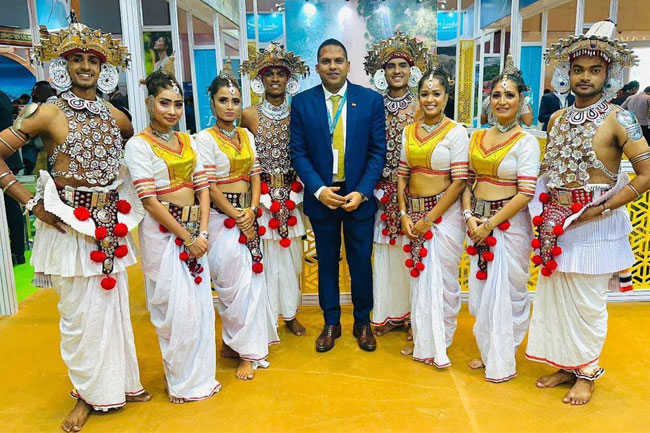
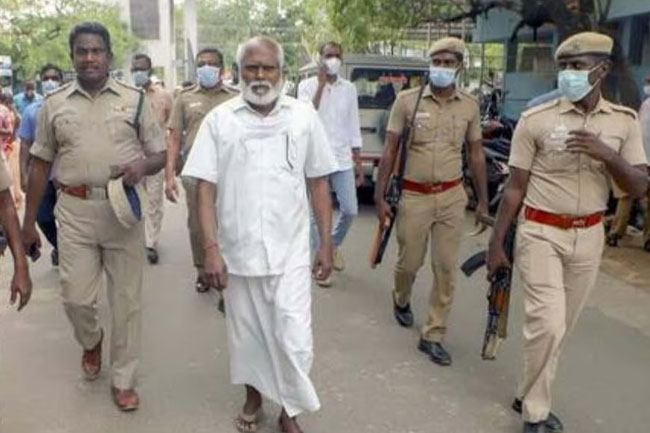



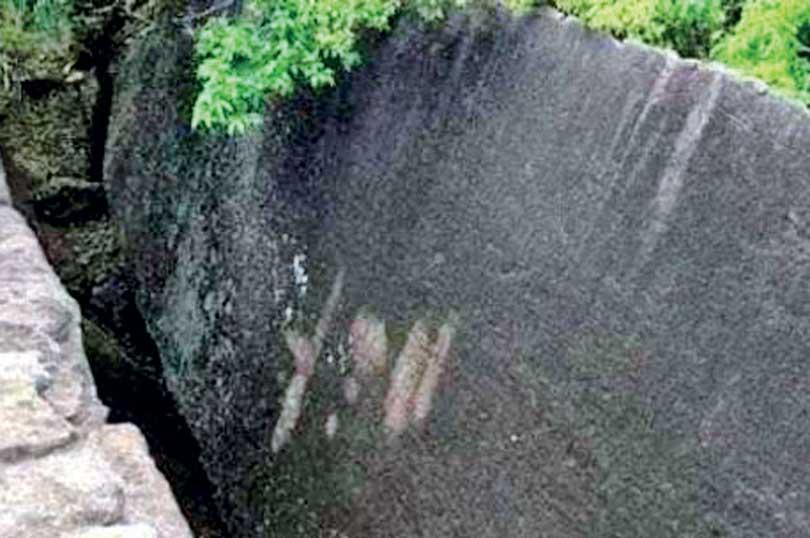
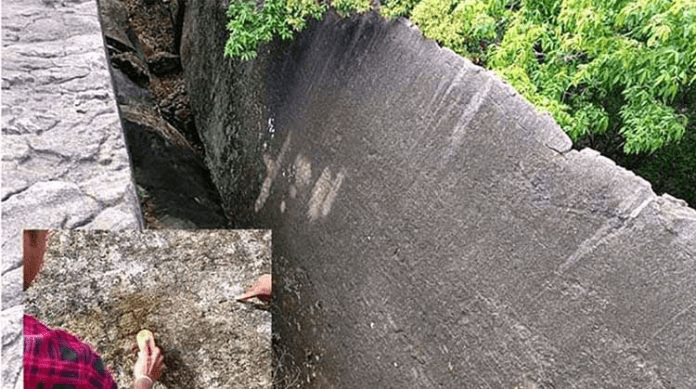
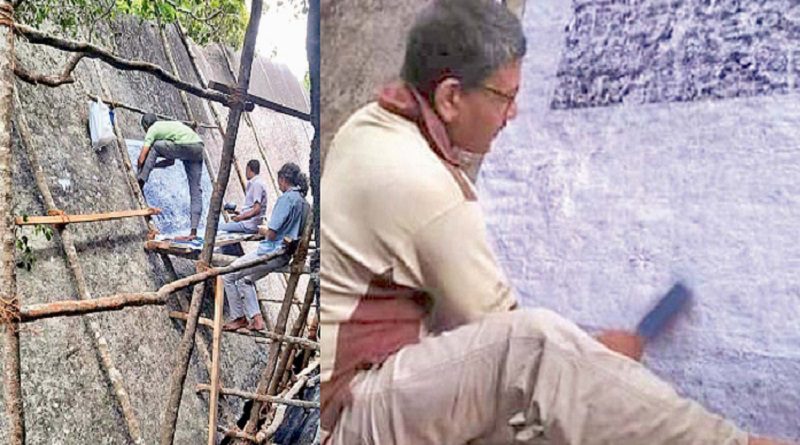
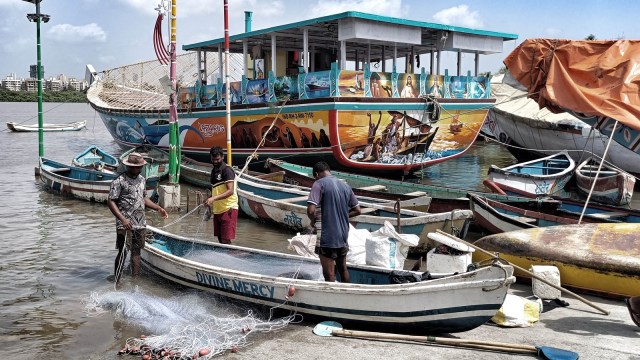 So far this year, the Sri Lankan Navy has arrested 88 Indian fishermen in the island’s waters and seized 12 Indian trawlers, the statement said. (Representational/ Express Photo)
So far this year, the Sri Lankan Navy has arrested 88 Indian fishermen in the island’s waters and seized 12 Indian trawlers, the statement said. (Representational/ Express Photo)